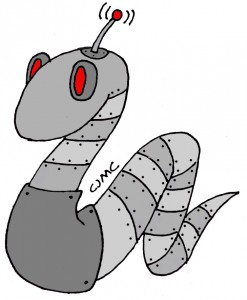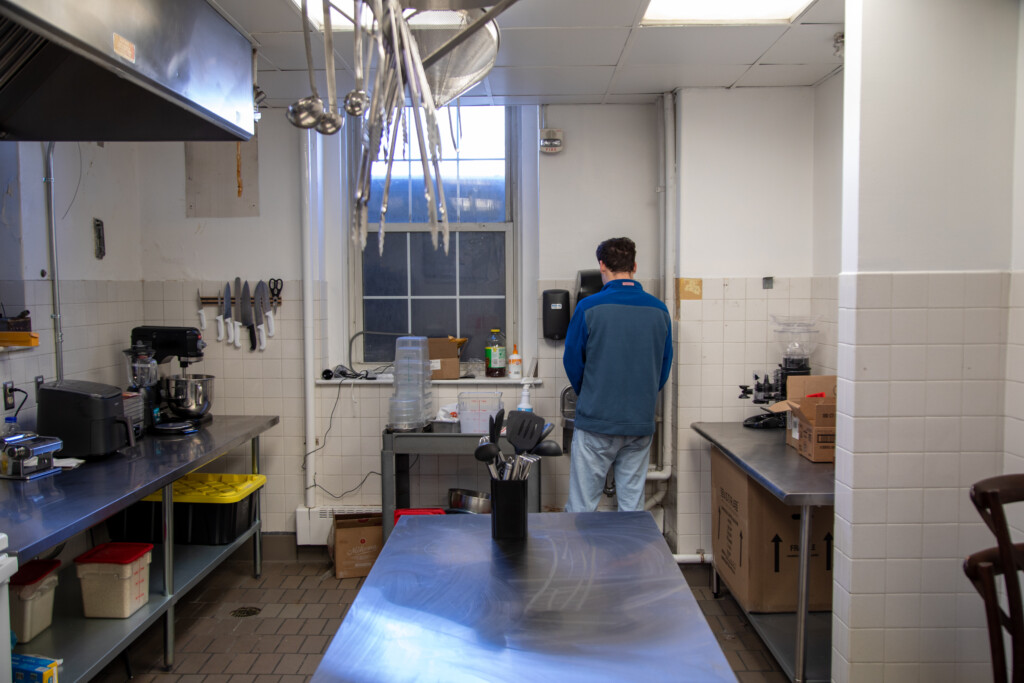The creature exploring the floors of the OpenWorm project might not seem world-changing. After all, it doesn’t do a whole lot.
Poke it in the nose, and it recoils. Tell it that there’s food up ahead, and it rushes forward. When it bumps into a wall, it turns. In fact, its behavior is nearly identical to that of a simple organism–a tiny species of worm that has a fairly simplistic lifestyle of eating, migrating and mating on the leaf litter in which it lives.
But what’s special about OpenWorm is that it isn’t actually a worm. It’s a Lego robot, and none of its reactions have been programmed by an engineer.
The worm that this squat little robot has been designed after is called C. Elegans, a common nematode that is one of the few species that has had its entire neural biology mapped by scientists. C. Elegans contains 302 neurons that have been painstakingly compiled into what is known as a connectome: an academic record of every synapse, every firing behavior, and every trait of this animal’s biological foundation of behavior.
OpenWorm does not have a list of instructions or conditions programmed in piece by piece by an overseeing software engineer. It simply contains this connectome, allowing it to act just like its real-world counterpart.
Basing robotics design off of natural counterparts isn’t restricted to computing. In fact, the last decade has seen a substantial emergence of autonomous systems that take on increasingly organic forms.
Two decades ago, a soft-bodied robot would have been considered impossible, since the circuitry required to run it was minifridge- sized, but in recent years, that same computational power can fit into a postage stamp. Freed from the confines of huge metal frames, robots from groups like Harvard’s Whitesides Lab can squeeze through cracks, flop across surface and pick up objects, all without the aid of traditional motors or pistons.
While they look fairly ridiculous and lack the capabilities of their counterparts, bio-inspired robotics have made significant gains in the area best exemplified by natural systems: efficiency.
Organic designs save power by not moving any farther than they have to, trading some power losses for huge gains in energy efficiency and weight. Pneumatic natural “muscle” may not have the raw horsepower of an electromagnetic stepper, but it takes a fraction of the weight and electricity. Processors inspired by biological neural networks tend to be orders of magnitude more power- efficient than typical computing cores because each “neuron” is active for only small periods of time.
These systems won’t lift cars or calculate the billionth digit of pi, but in research for deep-sea and space exploration, the ability to conserve power and mass is far more important than raw output.
Bio-inspired systems also hint at the future of everyday-use robotics. The appeal of low-power functionality goes further, and integration of biological techniques could give us new kinds of robotics for everything from changing lightbulbs to cleaning gutters.
Further down the line, it’s interesting to imagine what could come out of combining bio- inspired computing with organic physical designs or giving us simple but powerful systems capable of self sustaining, self organizing, and perhaps even self replicating bio- robotics.
It sounds a little eerie. After all, which is more scary–a future where robotics don’t ever get more complex than a nematode, or a future where they do?
Copeland is a member of the class of 2015.


